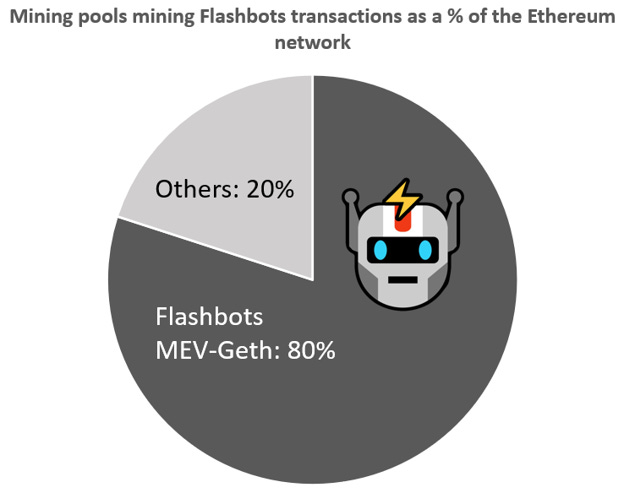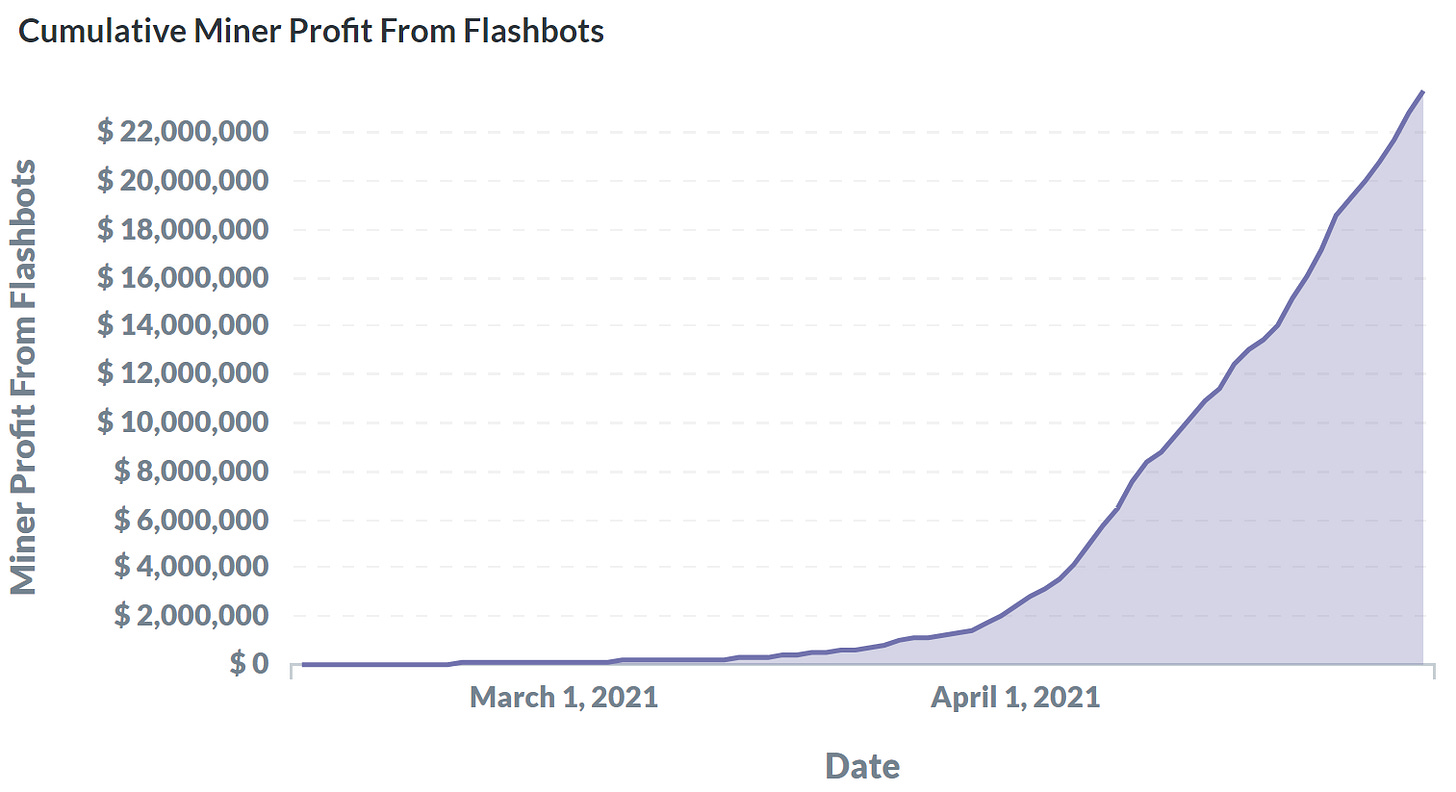Our Network: Issue #69
Coverage on Polygon, Numerai, The Graph, and Flashbots.
This is issue #69 of the on-chain analytics newsletter that reaches nearly 10k crypto investors every week 📈
About the editor: Spencer Noon is an investor at Variant, a first-check crypto VC fund.
✨ Together with our partners:
The 1inch Network, which unites decentralized protocols and enables the most lucrative, fastest, and protected operations in the DeFi space. And also Aave, where you can experience DeFi: Deposit, Earn, & Borrow on Aave.
This week our contributor analysts cover Web3: Polygon, Numerai, The Graph, and Flashbots.
① Polygon
👥 Ling Young Loon
📈 Polygon daily transaction count now matches Ethereum
👉 Join the Polygon community Discord
Polygon’s Proof of Stake sidechain has seen a meteoric rise in transaction volume, exceeding Ethereum’s transaction count by 18% on Tuesday. Its native DEX, Quickswap, accounted for 41,000 transactions that day, hitting over 20% of Uniswap’s transaction volume. There are only 400,000 unique addresses on Polygon, a far cry from 150 million on Ethereum or 61 million on BSC. Curiously, Polygon’s top 3 addresses sent 573,000 transactions this week, a large majority of which appear to be arbitrage trades.
11% of Nansen Smart Liquidity Providers have already begun transacting on Polygon. Smart money wallets have sent 9000 transactions each to Quickswap and Aavegotchi contracts. Funds and whales are not budging yet. Interestingly, only 25% of all Polygon addresses ever sent transactions on Ethereum.
Who seeds new wallets? The PoS bridge wins out, initiating the first transfer to 81,000 wallets. Personal wallets fund a surprising number of new addresses, some of which have never used Ethereum. Connext, Bitmax, and Ramp are alternative on-ramps, seeding 3300, 640, and 172 wallets respectively.
② Numerai
👥 Omni Analytics Group
📈 High performing NMR stakes are earning >190% APY
💰 Learn and earn $NMR over on Coinbase
Numerai can be described as a new type of crowdsourced hedge fund, run by a global community of data scientists whose weekly staked submissions to the Numerai meta-model secure the protocol. The network’s native utility token, Numeraire, is given as a reward for accurate predictions staked on the platform, but can also be burned as punishment for sub-par submissions. Despite the slashing risk, participants are undaunted and on average stake about 47 NMR (roughly $3,000 at the time of writing).
Numerai's scoring mechanism values submissions that are both predictive and unique. Though higher correlations are preferred, this dual focus allows Numerai's meta model to learn from predictions across the entire range of the correlation space, further encouraging signal diversity.
As a culmination of both the performance of market signals and the increased participation in staking, data scientists are earning average 1-year yields in excess of 190%, while truly exceptional signals can net nearly 800% APY.
③ The Graph
👥 Eva Beylin & Brandon Ramirez
📈 Hosted subgraphs begin migrating to the decentralized network
👉 Become an Indexer on The Graph
Query volume on The Graph’s hosted service has continued to rise to unprecedented volume. Over 600 million queries are processed per day, totaling over 19 billion in March alone. This usage has been driven by the increasing adoption of Ethereum dapps and expansion in supporting multiple EVM-based chains including Celo, Polygon and Binance Smart Chain.
We’ve seen significant growth in DeFi continuing from “DeFi Summer”, with AMMs still being the most popular category. There has also been accelerating usage of NFTs and entertainment platforms. Additionally, cross-chain (eg. wrapped bitcoin) and scaling solutions are seeing increased usage.
This week, The Graph began migrating subgraphs from the hosted service to the decentralized network. After more than 90 days of bootstrapping indexing on mainnet, the network is ready to begin processing queries.
Audius, DODO, Enzyme, Gnosis, Livepeer, mStable, Opyn, PoolTogether, Reflexer, and UMA are the first 10 subgraphs that have begun migrating over. Since December, only the PoolTogether had received allocations, averaging more than 400M GRT allocated by Indexers. However, in Phase 1 of the migration, Indexers are slowly beginning to allocate towards new subgraphs in preparation for Phase 2, which is when queries will be sent on mainnet.
By April, over 2.6B GRT has been staked by Indexers and Delegators, up ~8% since February. The Delegator to Indexer stake ratio is 2.76, falling from 3.08 at the end of February. This indicates that while overall GRT stake is increasing, Indexing stake is growing faster than Delegation. While Delegators are critical for enabling economic security of the network, increased Indexer adoption also signifies that Graph node operators are becoming more comfortable with the infrastructure and are preparing for migration.
④ Flashbots
👥 Robert Miller
📈 Miners have earned $24m using Flashbots to date
👉 Join the Flashbots community Discord
Flashbots is a research and development organization focused on mitigating the negative externalities of current MEV extraction techniques and avoiding the existential risks MEV could cause to state-rich blockchains like Ethereum. Since launching in January of this year, Flashbots’ MEV-geth client has seen rapid adoption. Today mining pools totaling more than 80% of Ethereum’s hashrate are running MEV-geth, which enables those pools to capture MEV in a fair, transparent, and efficient way.
To date, miners have earned $24m in ETH by including transactions sent via Flashbots. Over $22m of this income occurred in April alone. This is additional income (taking into account opportunity costs), with miners earning an additional 5% on average in revenue per block with Flashbots transactions.
Finally, the number of weekly unique users (measured by distinct EOAs) that have Flashbots transactions included on-chain has steadily increased since the beginning of this year. One factor contributing to this is an increase in the number of unique use cases that Flashbots supports, a sign of growing utility.
















